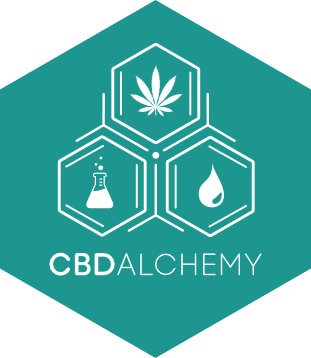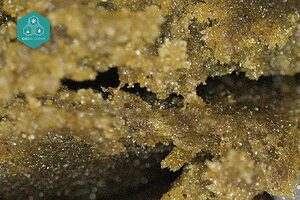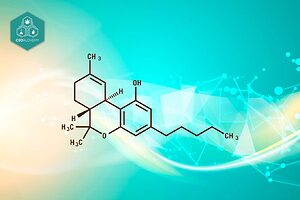THC, or thc tetrahydrocannabinol, is the chemical compound in cannabis that causes most of its psychoactive effects. This article explains what THC is, its mode of action, medical uses and potential risks.
The most important facts at a glance
- Tetrahydrocannabinol (THC) is the main component of cannabis and is responsible for its psychoactive effects.
- THC interacts with CB1 and CB2 receptors in the body, leading to various physiological and psychotropic effects.
- The legal framework regarding THC varies considerably in Germany and Austria, with cannabis being regulated in Germany since April 2024.
What is THC?
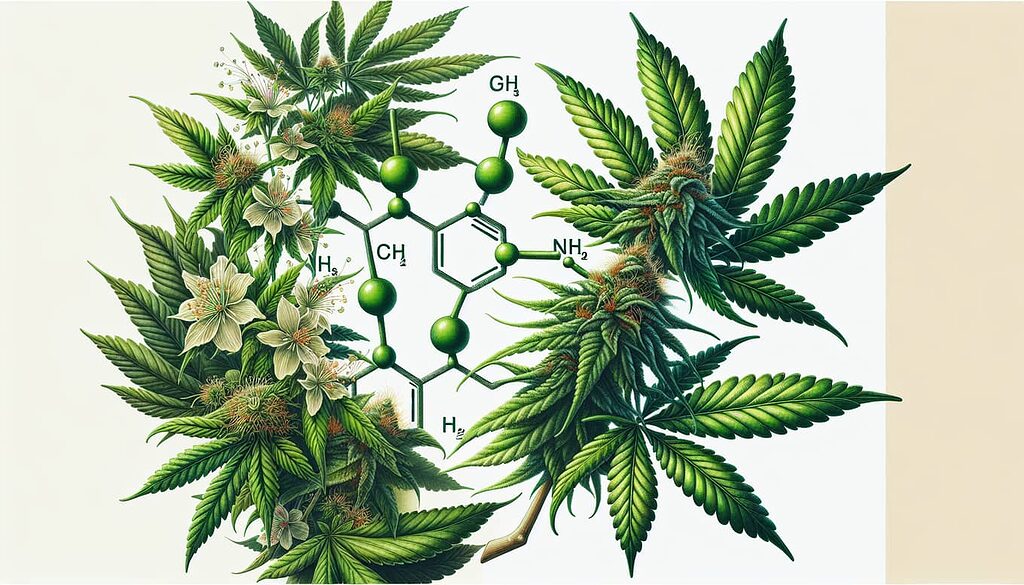
Tetrahydrocannabinol (Δ-THC) is the main component of cannabis and one of the most widely used intoxicants in the world. It is responsible for the intoxicating effects of the hemp plant that many people experience through the consumption of cannabis. THC is also known as dronabinol, a chemical name often used in medical circles.
THC is present in various products of the cannabis plant, including cannabis buds, cannabis concentrates and cannabis oil, as well as cannabis products. These products often label their THC content to inform consumers about potency.
THC should be distinguished from other cannabinoids due to its particular effects and intoxicating properties.
Chemical structure of THC
The chemical structure of THC, whose formula is C21H30O2, is essential to its effects. The systematic name of THC is c chromen 1 ol, which describes its chemical structure and nomenclature. At room temperature, THC is a colorless oil and has a molar mass of 314.469 g/mol. It is similar in structure to the body’s endocannabinoid anandamide, which explains why it binds so effectively to cannabinoid receptors.
This similarity allows THC to act in a variety of ways in the human body by influencing specific receptors responsible for various physiological processes. The chemical structure of THC is therefore the key to its broad spectrum of effects.
Difference between THC and other cannabinoids
While THC is known for its psychoactive effects, there are other cannabinoids such as CBD that do not have the same effects. The structure of THC contains closed carbon rings, while CBD has an open carbon ring. This difference in structure leads to different effects on the body.
Unlike THC, which leads to intoxicating effects, CBD works on a more physical level and has no psychoactive effects. These differences make each cannabinoid useful for specific applications and illustrate the versatility of the cannabis plant.
Origin and extraction of THC
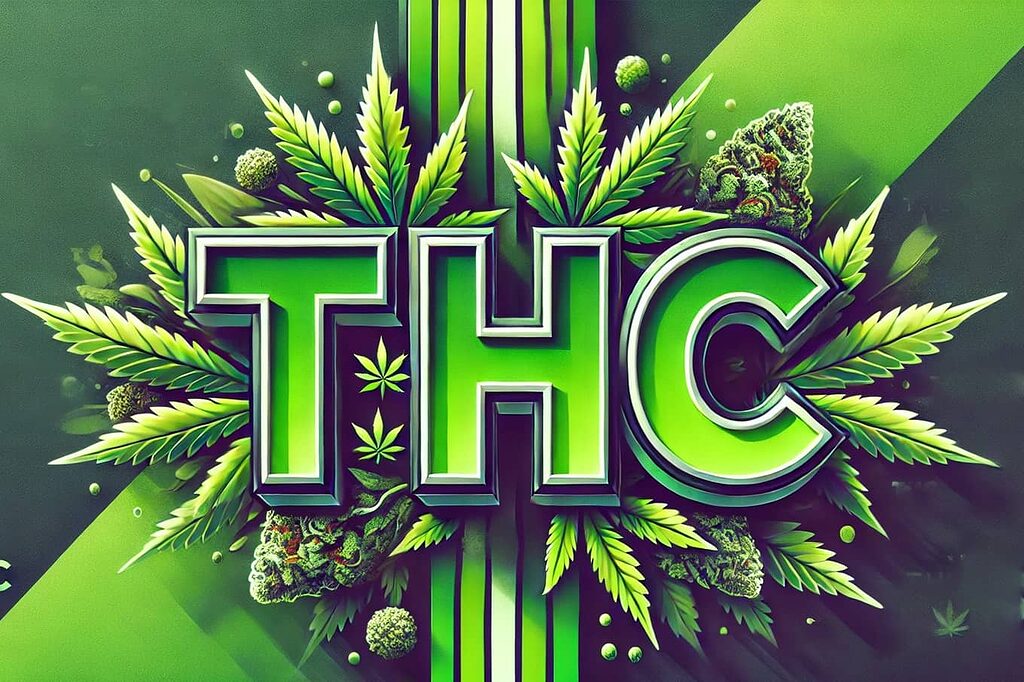
THC is mainly found in the female flowers of the cannabis plant. Cannabis resin, which is often pressed in blocks and comes from regions such as North Africa or Afghanistan, is usually more concentrated than plant cannabis. These flowers have a THC content of around 2 to 30 %, with unfertilized female flowers being the main source. Within the plant, THC is mainly present in the form of inactive THC acids, which are converted into active THC by heat and UV radiation.
Various extraction methods are used to obtain THC, including the use of solvents. These methods allow the extraction of cannabis oil, which contains THC as well as other cannabinoids. When the plant material is heated, decarboxylation occurs, producing active THC.
Cannabis grows best in temperate and tropical climates, where conditions are ideal for THC production. These climatic conditions support the growth of the cannabis plant and the production of THC in high concentrations.
Biosynthesis of THC
How is THC produced in the cannabis plant?
The biosynthesis of THC in the cannabis plant is a fascinating and complex process involving several enzymes and chemical reactions. THC is produced in the trichome resin glands of the cannabis plant, particularly in the female flowers. These tiny, resinous glands are the main production sites for the cannabinoids, including THC.
The process begins with the synthesis of geranyl pyrophosphate and olivetolic acid, two precursors that are converted to cannabigerolic acid (CBGA) by enzymatic condensation. CBGA is an important precursor that is converted into tetrahydrocannabinolic acid (THCA) by specific enzymes. THCA is the inactive form of THC and must be converted into active THC by decarboxylation, i.e. the removal of a carboxyl group. This process can be triggered by heat, UV radiation or enzymatic reactions.
The biosynthesis of THC is a crucial step in the development of the cannabis plant and enables the plant to develop its characteristic effects. Without this process, the production of THC and thus the psychoactive effects of the cannabis plant would not be possible.
Δ9-THC: The psychoactive form of THC
What is Δ9-THC?
Δ9-THC (delta-9-tetrahydrocannabinol) is the psychoactive form of THC, which is responsible for the intoxicating effects of cannabis. It is a cannabinoid found in the cannabis plant and is produced by the decarboxylation of THCA. This chemical conversion is crucial as only Δ9-THC has the ability to activate the cannabinoid receptors in the brain and body.
Δ9-THC binds to the cannabinoid receptors, particularly the CB1 receptors in the brain, and activates them. This activation leads to the characteristic effects of cannabis, such as euphoria, relaxation and pain relief. The psychoactive effects of Δ9-THC are well documented and include altered cognition and increased appetite.
It is important to note that Δ9-THC is the most studied form of THC and is often simply referred to as ‘THC’. However, there are other forms of THC, such as Δ8-THC, which can also have psychoactive effects but are less intense.
The effects of Δ9-THC depend heavily on the dose and individual tolerance. While low doses often have a relaxing and pain-relieving effect, high doses can lead to hallucinations and delusions. It is therefore important to dose the consumption of Δ9-THC carefully and to take individual reactions into account.
Mechanism of action of THC
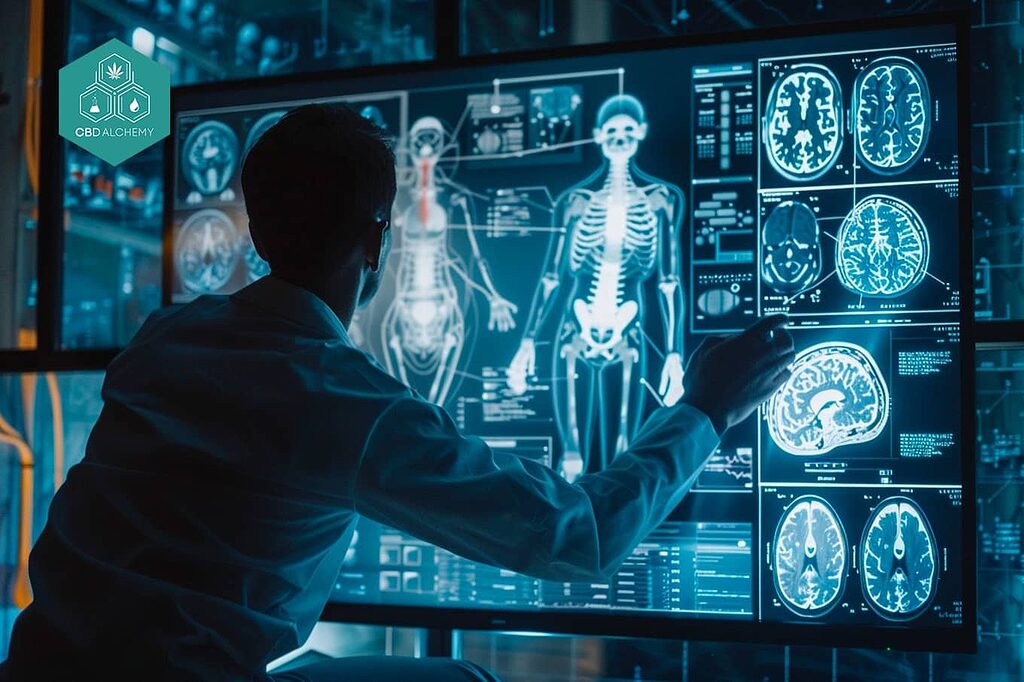
The mechanism of action of THC and its active ingredients is fascinating and complex. THC interacts mainly with the CB1 and CB2 receptors in the body. The CB1 receptors are mainly located in the brain and nervous system, while the CB2 receptors are mainly involved in immune modulation. These interactions lead to different physiological effects depending on where the receptors are located in the body.
When THC binds to the cannabinoid receptors, dopamine is released, which can affect normal brain communication. This action explains many of the psychoactive effects of THC, including euphoria and altered cognition.
THC is absorbed into the body very quickly when ingested via the respiratory tract, resulting in a rapid effect.
Effects of THC
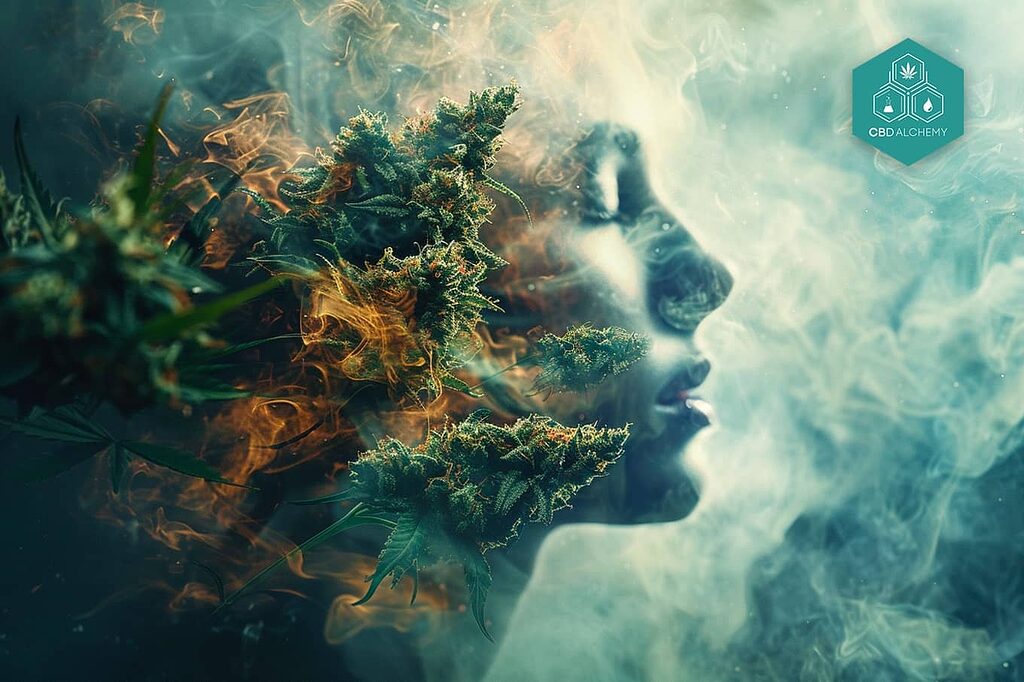
The effects of THC are diverse and include both psychotropic and physical effects. Typical effects include euphoria, altered perception and appetite stimulation. These effects usually occur shortly after consumption and can last for several hours.
THC influences signal transmission to CB1 receptors, which can lead to feelings of happiness and pain relief. The psychoactive effects of THC can significantly influence the perception of reality and lead to an altered consciousness.
Short-term effects
The short-term effects of THC include changes in the perception of time and increased emotional experience. These effects can lead to a strong euphoric feeling, which is often associated with a positive sensation.
Another well-known phenomenon is the increased appetite, often referred to as ‘binge eating’.
Long-term effects
Long-term THC use can increase the risk of mental illness. Studies show that regular use can impair brain performance, although these effects usually subside after use is discontinued.
These long-term effects should always be considered when using THC.
Medical uses of THC
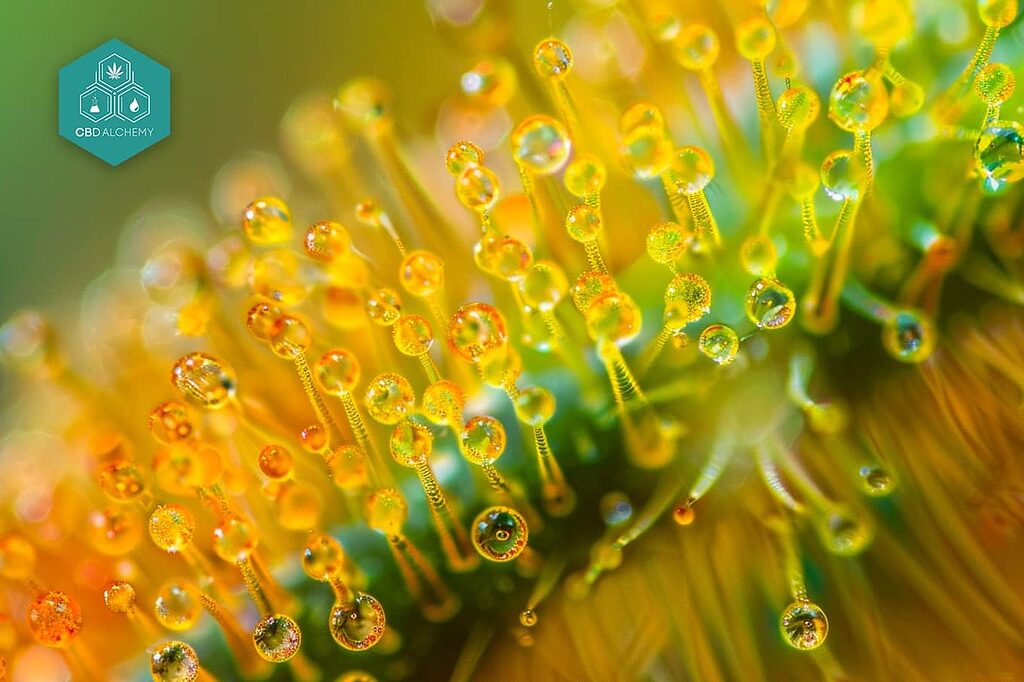
THC has gained importance in medicine. It can be used for chronic pain, muscle spasms in multiple sclerosis and chemotherapy-induced nausea. However, the use of THC for treatment must meet strict medical requirements.
Approved cannabis medications are often prescribed in standardized forms such as capsules or oral sprays. This standardization ensures controlled dosing and minimizes the risk of side effects. Cannabis is often prescribed as an adjunct treatment to existing medications.
Side effects and risks of THC
As with many substances, there are side effects and risks associated with THC. The possible side effects include
- acute psychosis
- Hallucinations
- Delusions
- Loss of a sense of identity
These effects can occur particularly in inexperienced users or with excessive consumption.
Regular use of THC can impair memory and attention and lead to thinking and learning disorders. Side effects such as increased psychotropic effects and an increased risk of accidents due to reduced reaction times are also possible.
THC is addictive due to the release of dopamine, which reinforces behavior and can cause dose dependence.
Detectability of THC
The detectability of THC in the body varies depending on consumption behavior and test method. THC can be detected in urine between three and 30 days after consumption. THC can theoretically be detected in hair up to 90 days after consumption, although hair tests are often unreliable.
Regular users detect THC for longer than occasional users, who only have it in their bodies for around three days after consumption. Detectability can last up to 30 days or longer in heavy users.
Legal aspects of THC
In Germany, the Cannabis Act was passed on April 1, 2024, according to which cannabis is no longer considered a narcotic. The federal government has decided to control the supply of cannabis to adults in licensed stores. This project aims to regulate the legal sale of cannabis. Adults are allowed to grow a maximum of three cannabis plants for personal use.
Cannabis clubs, which are intended for the non-commercial cultivation and distribution of cannabis to adults, have been legalized under the new law. The legal treatment of cannabis possession varies across Germany, with different federal states having different regulations for small amounts.
In Austria, cannabis is considered an addictive drug and possession of small amounts can lead to a probationary period for occasional users. These differences illustrate the diverse legal framework that must be observed, particularly with regard to cannabis use.
Summary
THC is a fascinating component of the cannabis plant with a wide range of effects and applications. From the chemical structure to the mechanism of action to the legal aspects, we have gained a comprehensive insight into the world of THC. The medical applications offer promising possibilities, while the side effects and legal framework must always be kept in mind.
Armed with this knowledge, you can make an informed decision about the consumption and use of THC. Let’s explore the future of cannabis and its many applications together.
Frequently asked questions
What is the difference between THC and CBD?
The difference between THC and CBD is that THC is psychoactive and causes intoxicating effects, while CBD is non-psychoactive and has mainly physical effects.
How long is THC detectable in the body?
THC is detectable in urine for between three and 30 days, in hair for up to 90 days and in blood for up to four hours. These detection times can vary depending on consumption patterns and individual physiology.
What are the medical uses of THC?
THC has medical applications in the treatment of chronic pain, muscle spasms in multiple sclerosis and nausea caused by chemotherapy. This shows the potential of THC in the symptomatic relief of various conditions.
What are the side effects of THC?
THC can cause acute psychosis, hallucinations, memory and attention disorders and an increased risk of accidents. These side effects are crucial to consider the risks of using THC.
How has the cannabis law changed in Germany?
The Cannabis Act in Germany has changed so that from April 1, 2024, cannabis will no longer be considered a narcotic and adults will be allowed to grow up to three cannabis plants for personal use. This change represents a significant step towards legalization.
